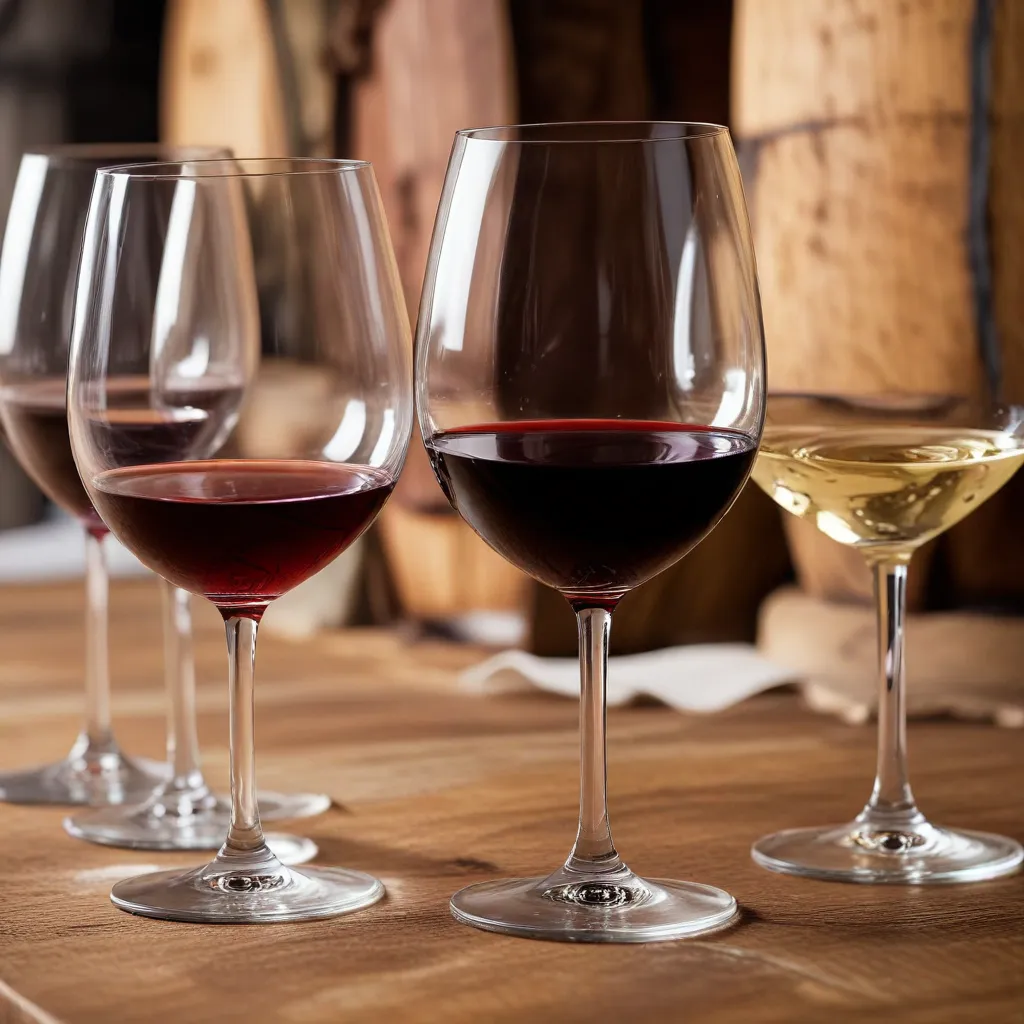
As a hospitality and wine expert at the Wine Garden Inn, I’m thrilled to share my insights on the art of wine tasting. In this comprehensive guide, we’ll delve into the sensory evaluation techniques that allow us to identify the subtle yet captivating textural nuances in each glass of wine.
Understanding Wine Tasting Techniques
Effective wine tasting is more than just swirling and sipping. It’s a multifaceted process that involves carefully engaging all of our senses to fully appreciate the complexities of the wine. Let’s explore the key steps in this sensory exploration.
Sensory Evaluation Approach
The foundation of wine tasting lies in a structured sensory evaluation. This systematic approach guides us through the visual, olfactory, and gustatory examination of the wine. By carefully observing the wine’s appearance, inhaling its aromas, and savoring its flavors, we can unlock a treasure trove of information about the vintage, the terroir, and the winemaker’s craft.
Identifying Aromas and Flavors
One of the most rewarding aspects of wine tasting is the ability to discern the diverse array of aromas and flavors present in each sip. From the fruity and floral to the earthy and spicy, our sense of smell and taste play a crucial role in unveiling the wine’s complexity. Developing a keen understanding of these olfactory and gustatory cues is key to becoming a discerning oenophile.
Analyzing Texture and Mouthfeel
Alongside the aromatic and flavor profiles, the textural qualities of a wine provide valuable insights into its character. Factors such as body, tannins, and acidity contribute to the wine’s mouthfeel, influencing the way it glides across the palate. By honing our ability to recognize these nuanced textural sensations, we can gain a deeper appreciation for the wine’s structure and potential for aging.
Exploring Wine Characteristics
Now that we’ve laid the groundwork, let’s delve into the specific characteristics we observe during the wine tasting process.
Visual Examination
The first step in our sensory exploration is to examine the wine’s appearance. By noting the color, clarity, and viscosity, we can gather clues about the wine’s grape variety, aging process, and alcohol content. A deep, rich hue may indicate a full-bodied red, while a pale, straw-like color could signify a light, crisp white.
Olfactory Analysis
The nose is often the gateway to a wine’s personality. As we swirl the glass and take a gentle inhalation, we’re greeted by a symphony of aromas. These primary aromas, derived from the grape itself, may evoke notes of fresh fruit, flowers, or herbs. Secondary aromas, on the other hand, arise from the fermentation process, while tertiary aromas develop during the wine’s maturation in the bottle or barrel.
Gustatory Perception
The final and most immersive step in our wine tasting journey is the taste experience. As the wine hits our palate, we’ll discern a range of flavors, from the fruit-forward to the savory and earthy. But it’s the interplay of acidity, tannins, and alcohol that truly captivates the senses, creating a harmonious balance that can evolve with each sip.
Developing a Discerning Palate
Mastering the art of wine tasting is an ongoing journey, but with practice and dedication, we can refine our ability to recognize even the most subtle textural nuances.
Recognizing Subtle Nuances
The true hallmark of an experienced sommelier or wine enthusiast is the ability to identify the finer details that distinguish one wine from another. Whether it’s the delicate floral notes in a Gewürztraminer or the firm, structured tannins in a Cabernet Sauvignon, honing this skill requires a deep understanding of the grape varietals, the winemaking process, and the influence of terroir.
Interpreting Tasting Notes
One of the most valuable tools in a wine lover’s arsenal is the ability to interpret detailed tasting notes. These descriptions, often provided by wine critics or producers, can serve as a roadmap to the wine’s character, helping us anticipate the flavors and textures we’re likely to encounter.
Enhancing Tasting Proficiency
Consistent practice is the key to developing a discerning palate. Participating in blind tastings, attending wine education classes, and exploring a diverse range of wine styles and regions can all contribute to refining our sensory skills. With each sip, we’ll become increasingly adept at identifying the nuanced textural qualities that make each wine unique.
The Role of Terroir in Wine Tasting
No discussion of wine tasting would be complete without acknowledging the profound influence of terroir – the unique combination of geographical, climatic, and soil factors that shape a wine’s character.
Geographical Influences
The location of the vineyard, from its latitude to its elevation, can have a significant impact on the grapes’ phenolic development, acidity levels, and flavor profiles. A wine from a cool-climate region, for instance, may exhibit a more pronounced acidity and minerality, while a warmer-climate wine may showcase riper, more fruit-forward characteristics.
Climatic Factors
The weather patterns and seasonal variations of a particular growing region also play a crucial role in determining a wine’s textural qualities. Factors such as precipitation, sunlight exposure, and temperature fluctuations can influence the grapes’ tannin structure, sugar content, and aromatic complexity.
Soil Composition
The very earth in which the vines are rooted can impart its own unique signature to the wine. The mineral, organic, and chemical composition of the soil can contribute to the wine’s mouthfeel, flavor intensity, and aging potential. A wine grown in calcareous soils, for example, may exhibit a more pronounced minerality and acidity.
Mastering the Art of Wine Pairing
The final piece of the wine tasting puzzle is the art of food and wine pairing. By understanding how the textural qualities of a wine interact with the flavors and textures of a dish, we can create harmonious and captivating culinary experiences.
Complementary Flavors
Identifying complementary flavor profiles is the foundation of successful wine pairing. A full-bodied, fruit-forward red wine, for instance, may pair beautifully with a rich, umami-laden dish, while a crisp, acidic white wine can provide a refreshing counterpoint to a creamy, decadent entrée.
Balancing Acidity and Tannins
The interplay of a wine’s acidity and tannins is another crucial factor to consider when pairing. A high-acid wine can cut through the richness of a dish, while tannins can balance out spicy or fatty flavors.
Considering Food Textures
The textural qualities of a dish – its crispness, creaminess, or chewiness – can also influence the optimal wine pairing. A light, delicate white wine may be overwhelmed by a hearty, textured entrée, while a robust, full-bodied red can stand up to the most substantial of meals.
By mastering the art of wine tasting and pairing, we can elevate every culinary experience, unlocking the synergistic potential between the grape and the plate. Whether you’re a seasoned oenophile or a passionate home cook, embracing these techniques will undoubtedly deepen your appreciation for the boundless world of wine. So, let’s raise a glass to the endless discoveries that await us on this enological journey!
